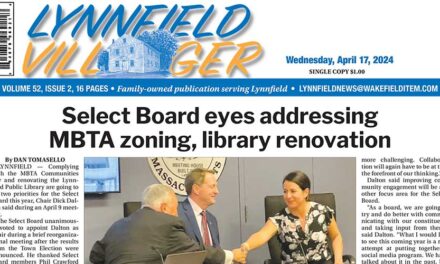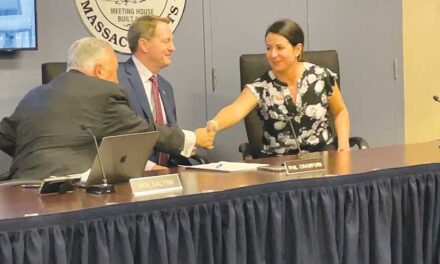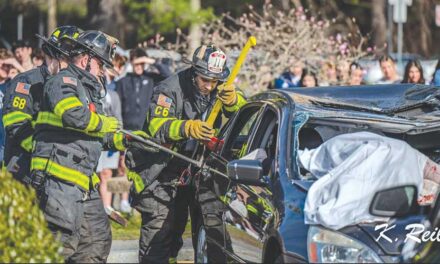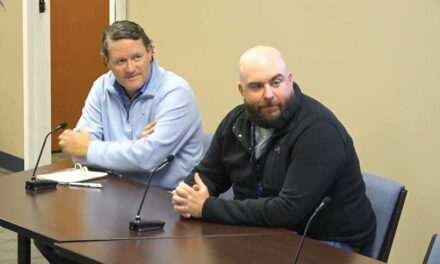Published January 27, 2021

By DAN TOMASELLO
LYNNFIELD — Two students joined school administrators in speaking out against a potential requirement that would have mandated students to keep their Zoom cameras on while learning remotely.
School Committee Chairman Jamie Hayman recalled during a Jan. 19 meeting that the committee recently toured all four schools in order to gain a better understanding of how the district’s hybrid model is working.
“One of the things I found striking was as you got up to the higher grades at the middle school and especially at the high school, there are an extraordinary number of dark screens because students’ cameras were off,” said Hayman. “It did not occur as much at the elementary schools.”
Hayman noted that he is often on Zoom for his job.
“I expect people to be on Zoom,” said Hayman. “It is obviously situational, but it prompted the conversation about whether this is something we should be requiring.”
Lynnfield High School Student Council President Ava O’Brien said it should be a “personal choice” for students to keep their Zoom cameras during remote learning days.
“It should not be decided for them,” said O’Brien. “Many people have different remote learning setups and are uncomfortable working from home anyways. Forcing students to have their cameras on can create anxiety in all ages of children.”
In response to a question from Hayman about student engagement, O’Brien said, “There are many ways to stay engaged on Zoom without having your camera on.”
“You can use breakout rooms and the chat feature,” said O’Brien. “You have to pay attention because teachers are asking us questions. You can still do that without your camera on. I think forcing students to have their cameras on would be like reprimanding students instead of giving them their own choice.”
High school sophomore Genna Gioioso agreed.
“I believe everyone should be able to decide whether to have their camera on or not,” said Gioioso. “I personally don’t mind putting my camera on, but I don’t know everyone’s situation. I think it should be a choice.”
High School Principal Bob Cleary said he is not concerned about students turning their Zoom cameras off.
“On the list of things we have to worry about, black screens is really far down on that list,” said Cleary. “For me, it is are our kids involved and are they attending classes. That is our number one issue here. Just because a kid has a screen up doesn’t mean they are paying attention. There are plenty of kids whose screens are black who are paying attention, answering questions and are participating in a chat room.”
High School Assistant Principal Brian Bates said a number of students are often reluctant to turn on their cameras because of social-emotional reasons.
“They often don’t feel comfortable seeing themselves on camera, talking or whatever,” said Bates. “That doesn’t mean they are not paying attention or are not participating.”
Teaching and Learning Director Kevin Cyr, who served as LHS’ assistant principal for eight years, concurred with Cleary and Bates’ point of view.
“We want students to be comfortable and safe so they can learn,” said Cyr. “My number one concern is that social-emotional component. I also have concerns about equity. There are a number of families who are conscious about what we see in the background of their homes.”
METCO Director Curtis Blyden expressed concerns that requiring students to have their cameras on would violate their privacy.
“There are some of our families who have multiple people working from home,” said Blyden. “There are families who don’t want people seeing the inside of their home. The strongest way to hold our students accountable is through their grades and that is what I talk to students and families about. I don’t know how we can hold students accountable by requiring their camera to be on.”
While Student Services Director Roberta Keane said she opposed the camera requirement because of “social-emotional concerns,” she said educators are urging students to turn on their cameras.
“We are encouraging students to leave their cameras on,” said Keane. “We have been talking about the value of having their camera on. There are students who may have a camera on, but are producing no work or are not doing well. There are students who have their camera off who are producing work and are showing they are mastering the material.”
In response to a question from School Committee member Stacy Dahlstedt, Middle School Assistant Principal Tom Sallee said teachers have found the black screen issue to be “frustrating.”
“I would love to see all of the cameras on,” said Sallee. “The students who have cameras on and have a high level of participation are doing better and are learning more.”
Sallee noted that most fifth-graders and sixth-graders are using their Zoom cameras, but said there are more students in the seventh and eighth grades turning them off.
“There is a lot of social pressure,” said Sallee. “After a few cameras start to drop off, it becomes contagious. We have had a lot of parents tell our teachers they want their child to have their camera on and they don’t care what anyone else is doing. I had an eighth-grader tell me her friends were teasing her because her mom was making her put her camera on. That’s what the kids are doing.”
Summer Street School Principal Dr. Karen Dwyer said most elementary students are using their Zoom cameras, and said the majority who don’t is because of social-emotional reasons. She said teachers have been working diligently to keep students engaged while their cameras are off.
School Committeeman Phil McQueen said mandating cameras to be turned on does not mean it will lead to increased student achievement and engagement.
“Having the camera on is like having students’ just show up for class,” said McQueen. “Students don’t necessarily do work when they show up for class unless you metaphorically prod them.”
While School Committee member Tim Doyle said he understands students’ social-emotional concerns, he asked if it is a “disservice to students not to overcome those hurdles by turning that camera on.”
“If they go out into the workforce and are asked to participate in a Zoom meeting, I don’t think any company is going to want that individual to turn off their camera and not participate in a meeting or at least show their face,” said Doyle. “How do we reconcile that next step in life with what we are going to allow students to do for the balance of this hybrid model?”
Cleary said the two analogies are “apples and oranges.”
“We are talking about children here,” said Cleary. “I think preparing them for that next level is giving them that choice. I have two college students, and their cameras are not on all the time. The best way to prepare students is by giving them that choice and talking to them about why it is good, but forcing them to do it is not preparing them for anything.”
Bates noted that educators are asking students to do things on Zoom that many adults never had to do until last year.
“It’s a challenge for everybody,” said Bates. “We want everybody to have their cameras on, but it can’t be mandated.”
After the discussion, the School Committee took no action on establishing a camera policy.
School Committee Vice Chairman Rich Sjoberg thanked O’Brien, Gioioso and the administrators for the feedback.
“It’s always great to hear the student’s perspective,” said Sjoberg.
While Hayman said he prefers that students keep their cameras on, he deferred to the recommendations made by school officials and the two students.
“We expect our students to advocate for what they feel is best, especially in this environment that is so different,” said Hayman. “We are not going to do something that doesn’t work for our students and our staff.




